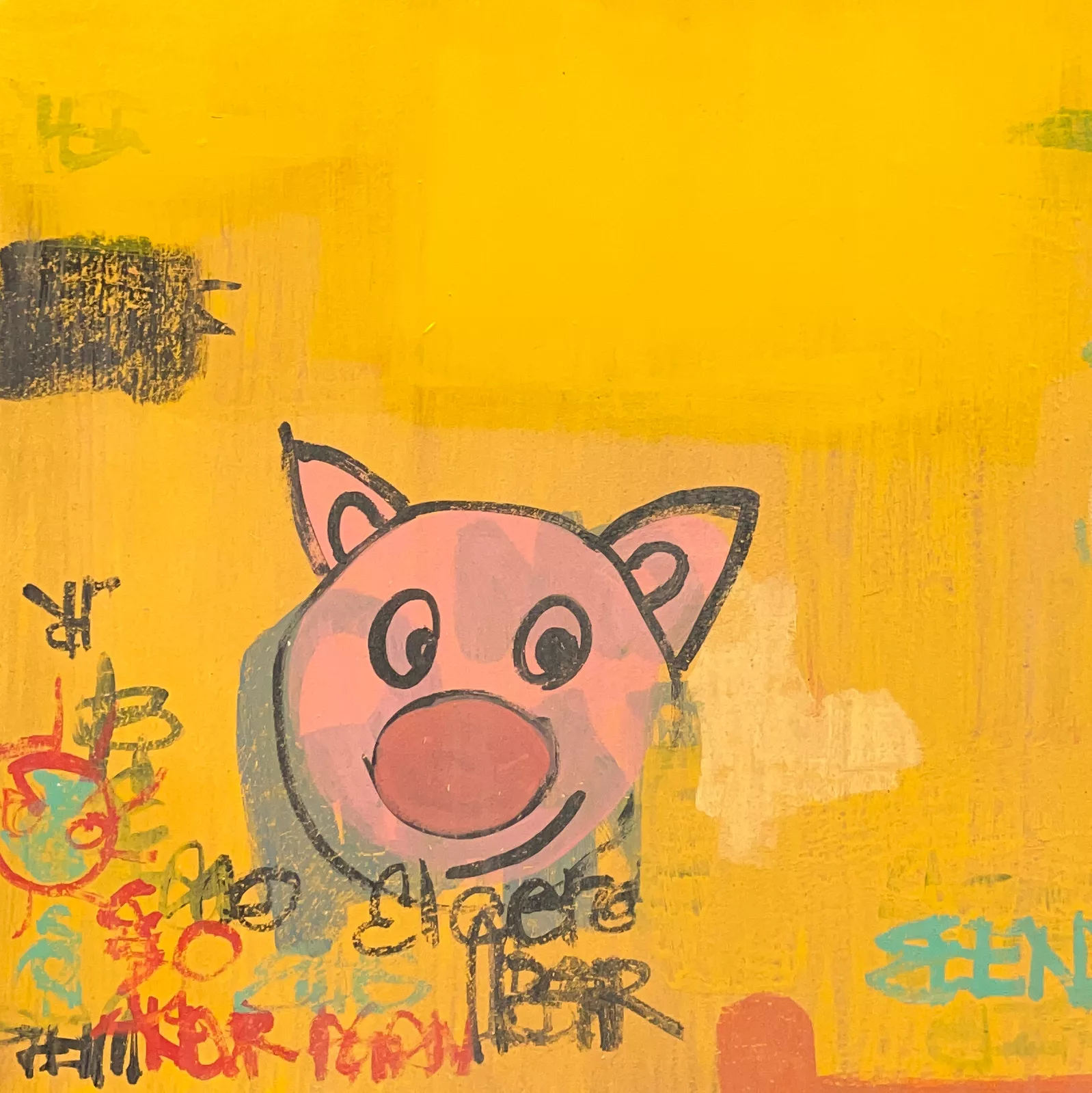Frank Auerbach, one of the most influential British artists of the 20th century, left behind a body of work that is as textured and layered as the thickly applied paint that defined his signature style. Born in Berlin in 1931 to Jewish parents, Auerbach was sent to England in 1939 via the Kindertransport, narrowly escaping the horrors of Nazi Germany. His parents, tragically, were not as fortunate, perishing in Auschwitz. This early trauma profoundly shaped his life and art, contributing to the depth, intensity, and commitment that characterize his paintings.
Auerbach’s work, celebrated for its visceral energy and emotional resonance, offers a window into his psyche, his environment, and his relentless dedication to his craft. Through his unique approach to portraiture and urban landscapes, Auerbach redefined the boundaries of modern art, becoming a pivotal figure in the “School of London” alongside Lucian Freud and Francis Bacon. His story is one of resilience, brilliance, and the transformative power of art.
Early Life and Artistic Beginnings
Frank Auerbach was born into a middle-class Jewish family in Berlin. His father was a patent lawyer, and his mother was a former art student. With the rise of the Nazi regime, the Auerbachs sought to protect their son by sending him to England at the age of eight. He would never see his parents again, as they were deported to concentration camps and killed during the Holocaust.
Despite this devastating loss, Auerbach found a new home in Britain. He studied at St Martin’s School of Art and later at the Royal College of Art, where he developed his distinctive style. His teachers recognized his talent early, but Auerbach was unyielding in his quest to push artistic boundaries. He would spend countless hours reworking his canvases, layering paint, scraping it away, and starting over, all in pursuit of capturing the essence of his subject.
The Studio and the Process
For over seven decades, Auerbach worked from the same modest studio in Mornington Crescent, London. This space became the nucleus of his creative life, a place where he honed his craft with monastic discipline. He limited his subjects to a handful of sitters—often friends, lovers, and acquaintances—whom he painted repeatedly. His portraits are not mere likenesses but profound explorations of identity, emotion, and existence.
Auerbach’s process was as rigorous as it was intuitive. He would paint directly onto the canvas with thick, impasto strokes, often using a palette knife or his hands. The paint was applied, scraped off, and reapplied, resulting in works that possess an almost sculptural quality. Each painting is a record of its own creation, layered with the history of its making.
His landscapes, particularly of London, reflect a similar intensity. Whether capturing the bustling streets of Camden or the quiet corners of Primrose Hill, Auerbach’s cityscapes vibrate with energy and movement. These works convey not just the physicality of the city but its soul, as experienced by someone deeply connected to its rhythms and transformations.
The School of London
Auerbach is often associated with the “School of London,” a loosely defined group of post-war figurative painters that included Lucian Freud, Francis Bacon, and Leon Kossoff. These artists shared an interest in capturing the human condition, often through deeply personal and emotionally charged works. Unlike the abstraction that dominated much of 20th-century art, the School of London emphasized the figure and the tangible world.
While Auerbach’s work shares thematic similarities with his peers, his approach was uniquely his own. His paintings possess a rawness and immediacy that set them apart. Where Freud’s portraits are precise and detailed, Auerbach’s are tumultuous and textured, emphasizing the physical act of painting as much as the subject itself.
Themes and Techniques
1. The Weight of History
Auerbach’s work is steeped in the weight of his personal and collective history. His early loss and the shadow of the Holocaust imbue his paintings with a sense of urgency and existential inquiry. This is evident in the way he approaches his sitters, as if searching for something eternal and unchanging beneath the surface.
2. The Power of the Everyday
Though Auerbach’s subjects were often ordinary people and familiar urban landscapes, his treatment of them is anything but mundane. By revisiting the same sitters and scenes repeatedly, he found infinite complexity in the ordinary. His works remind us that beauty and profundity can be found in the most familiar places.
3. The Materiality of Paint
Auerbach’s use of paint is central to his artistic identity. The thick, layered surfaces of his canvases invite the viewer to engage not just with the image but with the process of its creation. The physicality of his work underscores the emotional intensity he brings to each piece.
Recognition and Legacy
Throughout his career, Auerbach received significant recognition, solidifying his place in the pantheon of modern art. In 1986, he was awarded the Golden Lion at the Venice Biennale, one of the highest honors in the art world. His works are housed in major collections, including the Tate Gallery, the National Gallery in London, and the Museum of Modern Art in New York.
Despite his acclaim, Auerbach remained a deeply private and self-effacing figure, focusing on his work rather than the art world’s spotlight. This dedication to his craft earned him the respect and admiration of fellow artists, critics, and collectors.
Frank Auerbach’s Enduring Influence
Auerbach’s influence extends far beyond his immediate circle. His fearless exploration of texture, form, and emotion has inspired generations of artists to embrace the physicality of painting. His ability to find profundity in the mundane and to grapple with the weight of history through art remains a powerful testament to his vision.
In November 2024, Auerbach passed away at the age of 93, leaving behind a legacy that continues to resonate. His works, with their layered surfaces and emotional depth, remind us of the power of art to capture the complexity of human experience.
A Life in Layers
Frank Auerbach’s life and work are a testament to resilience, dedication, and the transformative power of art. From his early beginnings as a child refugee to his emergence as one of Britain’s greatest painters, Auerbach’s story is one of triumph over adversity. His paintings, with their thickly layered surfaces and emotional intensity, serve as both personal expressions and universal explorations of identity, place, and history.
In Auerbach’s hands, paint becomes more than a medium; it becomes a means of grappling with existence itself. His legacy, like his canvases, is rich, textured, and enduring—a reminder that art can transcend time, place, and even the artist’s own life.
No comments yet.








